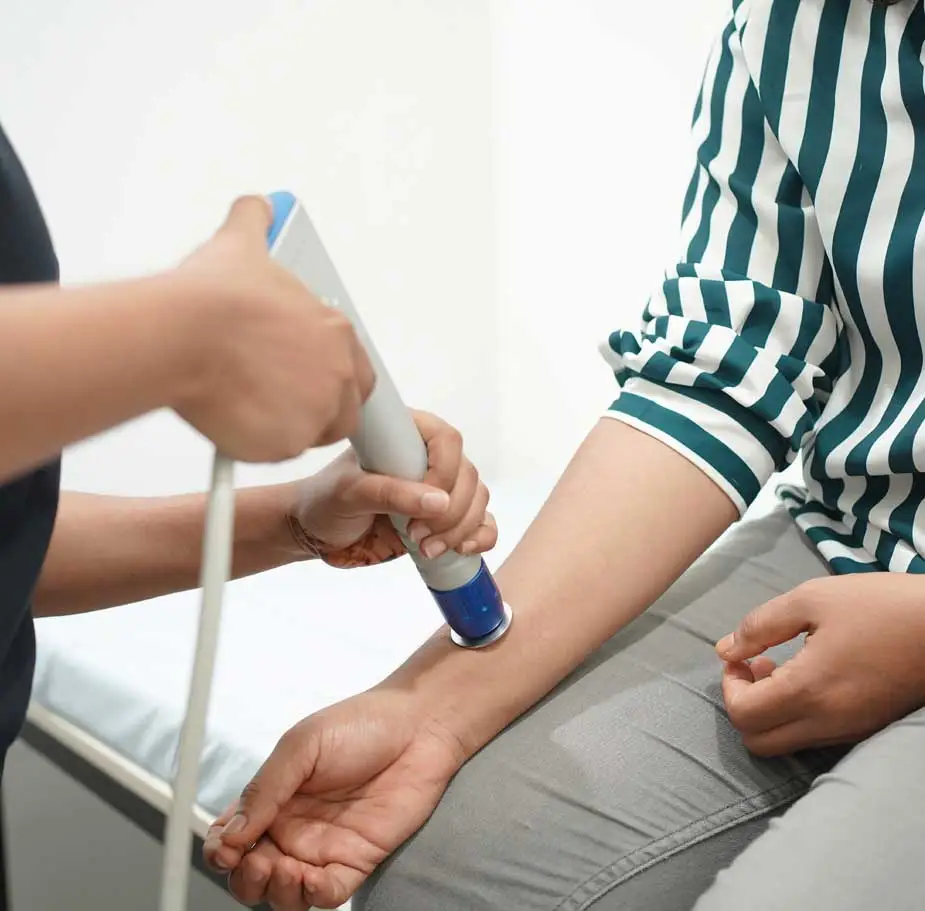Rotator Cuff Injury
Symptoms
Symptoms of rotator cuff injury may include:
Dull ache deep pain in the shoulder
Disturb sleep
Difficulty in overhead and reaching activities
Weakness
Popping or clicking sound on movements
Night pain
Causes
The causes of rotator cuff injury vary:
Family history
Diagnosis
Treatments
Patient education is essential to reduce further complications by proper rest and limiting the movement in the affected side. Modalities such as IFT, TENS, and Ultrasound are used for pain management. Home exercises are recommended to make the patient pain-free and functionally independent.
Our Sports Injury Recovery Program incorporates an advanced modality called Extracorporeal Shockwave Therapy (ESWT) is an advanced modality for the treatment of musculoskeletal conditions and its very effective in treating Grade 1 & Grade 2 rotator cuff tear. ESWT uses sound waves (high amplitude pulses of mechanical energy) to break up infected tissues and stimulate the rapid healing process. Once the pain reduces, we will start with ESWT. A proper rehab program is essential for complete recovery.
In addition, Pulsed Cell Repair Therapy (PCRT), another advanced modality, directs a series of electromagnetic impulses through injured tissue. Each pulse induces a tiny electrical signal that stimulates cellular repair and harnesses the body’s own ability to heal itself. This natural signal promotes the body to repair damaged or worn tissues/cartilages and to maintain healthy and proper functioning of the joint.
Sometimes, because of aging, injury or disease, signals that are naturally produced by the body is disturbed. When this occurs, the body is unable to repair the damage itself. This results in pain, inflammation, and loss of proper function in the joint. PCRT is unique in that it mimics the body’s natural signal, activating the normal healing process and stimulates the growth and repair of the damaged tissue.
The treatment session is typically 9 to 12 days, first 9 days should be continuous without interval. Because of the regenerative process, patient is advised for rest without any vigorous movements in the joint. If the patient is in pain, we will manage with other electrical modalities and then start with PCRT. After the PCRT sessions, we begin with our muscle strengthening exercises and lifestyle modifications, approximately 3 to 4 weeks after completing the PCRT sessions, which helps the patient become functionally independent.
Proper rehabilitation under the inspection of the therapist is essential for complete recovery and to attain functional independence.

Elements of Fitness & Sports-Injury Recovery
Extracorporeal Shockwave (ESWT)
Pulsed Cell Repair
Cryo Therapy
Exercises & Rehabilitation
Nutrition & Diet Management
Lifestyle Management
Ergonomics Guidance
Get a Quick Reply Here
Office
Monday to Saturday: 8:30am – 6pm
